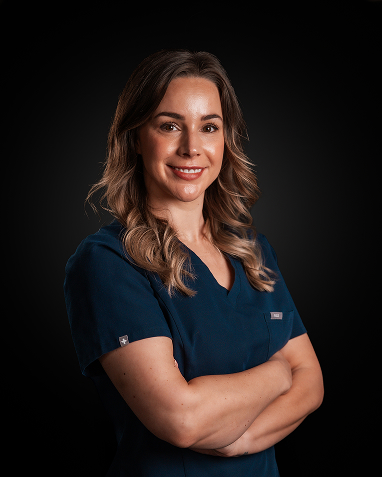Ozempic Dosing Schedule at a Glance |
|---|
Weeks | Dose | Purpose |
1-4 | 0.25 mg once a week | Helps your body get used to the medicine. |
5-8 | 0.5 mg once a week | First active dose for blood sugar and weight control. |
9-12 | 1 mg once a week | It can improve results if your body tolerates it well. |
13 and beyond | Up to 2 mg once a week | Maximum dose, only if your doctor advises it. |
Note: Not everyone needs the highest dose. Some people do well on lower doses, especially when paired with good food choices and regular movement. Your doctor will decide what’s best for your body.
Introduction
To get the right Ozempic dosing for weight loss, it’s important to work with your doctor. They’ll assess your goals, medical history, and then set up a dosing plan and schedule that stays easy on your body systems.

Ready to achieve your aesthetic goals?
- CQC-Registered Clinic with Nationally Recognised Leadership
- Over a Decade of Surgical & Aesthetic Expertise
- Personalised treatment plans tailored to your needs
Doctors prefer prescribing a gradual dosing approach. It starts with a low dosage and then slowly increases, allowing you to lose weight steadily while reducing side effects of Ozempic.
Everyone reacts differently, so your dose depends on your health, your goals, and how well you tolerate the medicine. Knowing this will help you understand each step and why it’s important for safe, lasting weight loss.
How Ozempic Works for Weight Loss
Ozempic works by copying a natural hormone in your body called GLP-1. This hormone helps control your appetite, slows down your stomach emptyings, and tells your brain when you feel full. Simply put, it helps you feel satisfied with less food.
Even at lower doses, Ozempic can support weight loss, especially when you eat a balanced diet and perform regular exercise. People often notice a reduction in cravings and a lessened desire to snack between meals.
While Ozempic is mainly used to control blood sugar in people who are diagnosed with type 2 diabetes, doctors sometimes prescribe it off-label to help people who are overweight or obese lose weight. It’s not a magic solution; lifestyle changes are still essential to get the best results.
Is Ozempic safe? Yes, Ozempic is safe when it is used under the guidance of a medical professional.
Step-by-Step Schedule of Ozempic Dosing for Weight Loss
When it comes to Ozempic for weight loss, the dose isn’t the same for everyone. Doctors usually start low and increase the dose slowly to minimise side effects and allow your body to adjust.
Here’s how it typically works:
Starting Dose (Weeks 1–4): 0.25 mg/week
- This is a very small dose.
- The main goal is to help your body get used to the medication.
- It is not meant to cause weight loss yet.
- Nausea, bloating, or mild stomach upset, are common side effects that are usually easier to manage at this stage.
First Maintenance Dose (Weeks 5–8): 0.5 mg/week
- This is the first dose that starts helping with appetite control and weight loss.
- Most people begin to notice changes in hunger and food intake at this stage.
Dose Escalation (Weeks 9–12: 1 mg/ week, 13+: 2 mg/week)
- Your doctor may increase the dose if you need more weight loss support or better appetite control.
- Not everyone needs to reach 2 mg. Some people do well on 0.5 mg or 1 mg of the medication.
- Each dose level is typically maintained for at least four weeks to allow your body time to adjust.
Important note: This guide is for general knowledge only and not a substitute for medical advice. Always speak with a healthcare provider before making treatment decisions.
Why Doctors Adjust Your Ozempic Dosing For Weight Loss
Not everyone responds to Ozempic in the same way, so your doctor may adjust your dose based on how your body reacts to it. Here’s why adjustments happen:
If your weight stops dropping after a few months, your doctor might increase the dose to help you continue losing weight safely.
Some people experience nausea, bloating, or stomach upset. Doctors may slow the dose increase or keep you on a lower dose until your body adjusts to the medication.
Overall Health and Medical Conditions
People who are aged or have kidney, liver, or stomach issues may need lower doses or slower increases. Other conditions, like heart problems or past pancreatitis, can also affect dosing decisions.
Some people lose weight quickly on a lower dose, so a higher dose isn’t always needed. Others may need a higher dose to reach their weight loss goals safely.
The key point: Your dose should always be guided by a doctor. Deciding your Ozempic dose, without medical supervision can cause side effects or make the medicine less effective.
Weight Loss Expectations and Timeline
It’s essential to have realistic expectations for the Ozempic weight loss timeline. Weight loss doesn’t happen overnight; it usually occurs gradually over several months.
- First few weeks: On the starting dose of 0.25 mg, weight loss is minimal. The main goal at this stage is for your body to adjust to the medication.
- Weeks 5–8: At 0.5 mg, many people begin to notice reduced hunger and slight weight loss.
- Weeks 9–12 and beyond: Increasing the dose to 1 mg or 2 mg (if necessary) can lead to more noticeable results, especially when combined with a healthy diet and regular exercise.
On average, people using Ozempic may lose 10–15% of their body weight over several months. Results vary depending on your dose, lifestyle habits, and individual response.
Remember: Consistency is key. Following your dosing schedule, maintaining healthy eating habits, and staying active all contribute to better results.
Ozempic Injection Sites & Technique
Ozempic is given as a small injection just under the skin. Once you learn the right way to do it, it becomes an easy weekly routine.
Where to Inject
You can inject Ozempic into:
- Your stomach area (at least 2 inches from your belly button).
- The front of your thighs.
- The outer part of your upper arms (if someone helps you).
- Switch the area each week to avoid irritation or lumps.
How to Do It Right
- Clean the injection site with an alcohol swab and let it dry.
- Insert the needle straight in and press the pen until the dose is done.
- Then, carefully remove the needle and dispose of it in a sharp box.
Quick Safety Reminders
- Don’t inject into bruised, hard, or scarred skin.
- Never inject into a muscle or vein.
- Always use a new needle for every dose.
Following these steps helps your injections stay safe, gentle, and comfortable.
Managing Side Effects of Ozempic Dosing
When starting Ozempic, some people feel mild side effects as their body adjusts. These usually fade with time, but it helps to know what to expect and how to stay comfortable.

Ready to achieve your aesthetic goals?
- CQC-Registered Clinic with Nationally Recognised Leadership
- Over a Decade of Surgical & Aesthetic Expertise
- Personalised treatment plans tailored to your needs
- Expect Some Common Side Effects: Nausea, bloating, or tiredness are common side effects reported by many people in the first few weeks. These are normal and often improve as your dose increases slowly.
- Eat Small, Gentle Meals: Avoid heavy, greasy, or spicy foods. Eat smaller meals more often and chew slowly to reduce nausea and stomach upset.
- Drink Plenty of Water: Sip water throughout the day. It helps ease headaches, tiredness, and mild stomach discomfort.
- Give Your Body Some Time: Your body needs time to get used to Ozempic. Don’t rush dose increases — your doctor will guide you on when to move to the next level safely.
- Know When To Call Your Doctor: If you ever feel severe vomiting, dizziness, or pain that doesn’t go away, contact your healthcare provider. They may adjust your dose or give advice to help you feel better.
Realistic Results: What to Expect with Ozempic for Weight Loss
Ozempic can help people lose weight, but the results vary from person to person. What matters most is patience and consistency.
Gradual, Steady Weight Loss
Most people start to notice small changes after a few weeks. On average, users can lose up to 12–15% of their body weight over several months when combined with healthy habits.
Lifestyle Still Matters
Ozempic works best when you pair it with a balanced diet and regular movement. It helps control hunger, but long-term success depends on daily choices too.
Everyone’s Journey Is Different
Some lose weight faster, while others progress slowly – both are completely normal. Your doctor will adjust your dose based on your body’s response to the medication.
Weight Loss May Slow Down
It’s common for results to level off after a few months. Staying active and consistent with your doses helps you stay on track and move forward.
Long-Term Use for Lasting Change
Ozempic is not a quick fix. It’s meant to help you make steady, healthy progress that lasts.
Who Should Not Use Ozempic
While you may have seen Ozempic being effective for many people, it’s not suitable for everyone. Here’s who might not be the right candidate for Ozempic:
Medical Conditions to Consider
You should avoid Ozempic if you:
- Have a history of thyroid cancer or MEN 2 (Multiple Endocrine Neoplasia type 2).
- Have had serious stomach or digestive problems.
- Are pregnant, planning to become pregnant, or nursing.
Allergies or Past Reactions
If you’ve ever had an allergic reaction to semaglutide or similar medicines, let your doctor know before using Ozempic.
Always Use Under Supervision
Never start Ozempic on your own. It should only be taken as prescribed and under the supervision of a doctor.
Conclusion
Finding the correct Ozempic dose for weight loss takes time and proper medical guidance. Medical supervision helps you get steady weight loss results and prevent adverse effects of Ozempic. With the right balance of diet, regular exercise, and a healthy lifestyle, many people notice significant improvements in both their weight and overall well-being.
The first step to start Ozempic for weight loss is having a complete medical consultation with a qualified professional who can create a personalised plan tailored to your needs.
At Yorkshire Skin Centre in Leeds, our team offers expert support and medical guidance to help you begin your Ozempic journey with confidence and care.
FAQs
1. How much Ozempic should I inject for weight loss?
Ozempic doses for weight loss typically begin at a low dose and are gradually increased. Most people begin with 0.25 mg once a week for the first four weeks to help their body adjust. After that, the dose is increased to 0.5 mg weekly. Depending on how your body responds, your doctor may raise the dose every few weeks — up to a maximum of 2 mg once a week. The goal is to find the dose that gives you steady results with minimal side effects.
2. Does Ozempic 0.5 or 1 mg help you lose weight?
Yes, both 0.5 mg and 1 mg doses of Ozempic can support weight loss. These doses help regulate blood sugar and reduce appetite, making it easier to eat less and feel full for longer. Many people notice gradual weight loss over time, typically losing between 10% and 20% of their body weight in a year, when combined with a healthy diet and lifestyle changes.
3. How quickly can you lose 30 pounds on Ozempic?
Weight loss with Ozempic varies from person to person. On average, people may lose 10–15% of their starting weight within six months to a year. For someone who weighs around 200 pounds, that could mean losing 20 to 30 pounds with consistent use, good nutrition, and regular activity. The process takes time, but slow and steady results are usually safer and easier to maintain.
4. Do you lose more weight on higher doses of Ozempic?
According to studies, higher doses of Ozempic can result in more significant weight loss, particularly in individuals who effectively tolerate the medication. However, not everyone needs the highest dose. Doctors increase the amount only when necessary and if your body handles it comfortably.

























